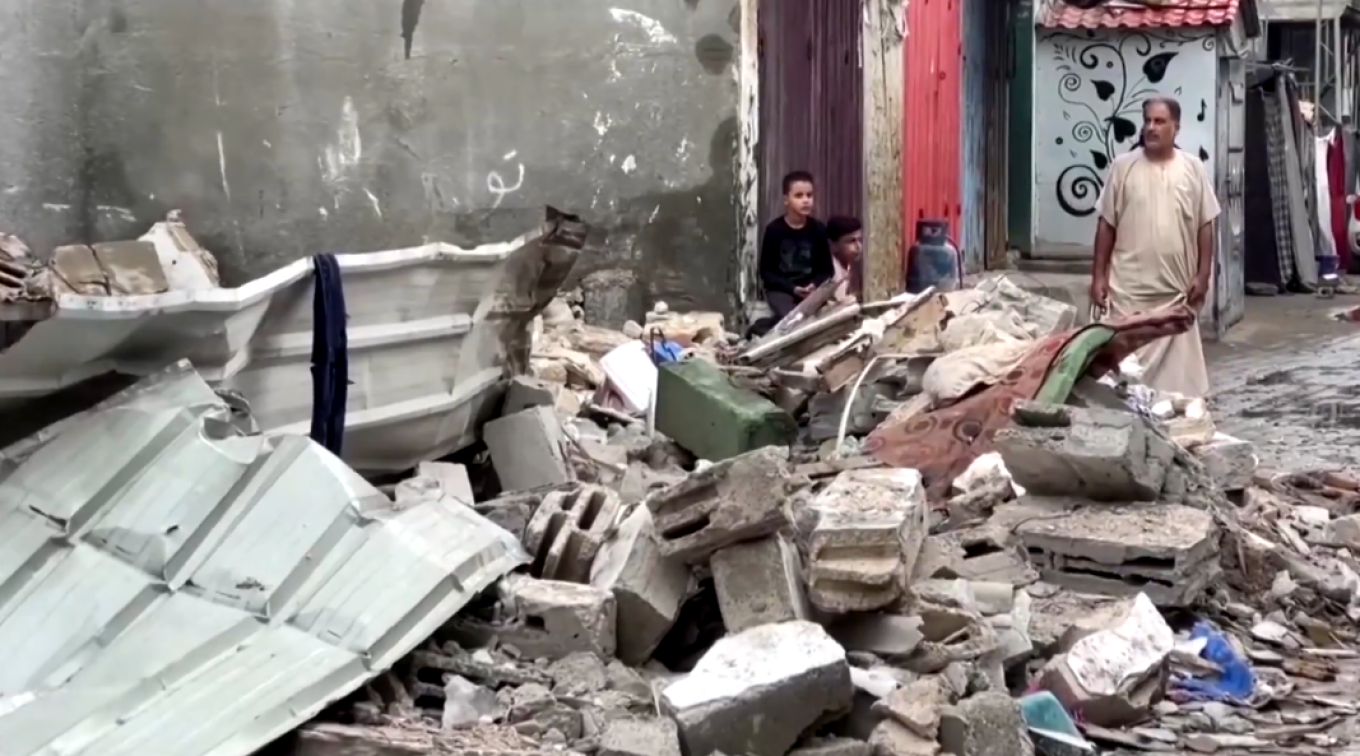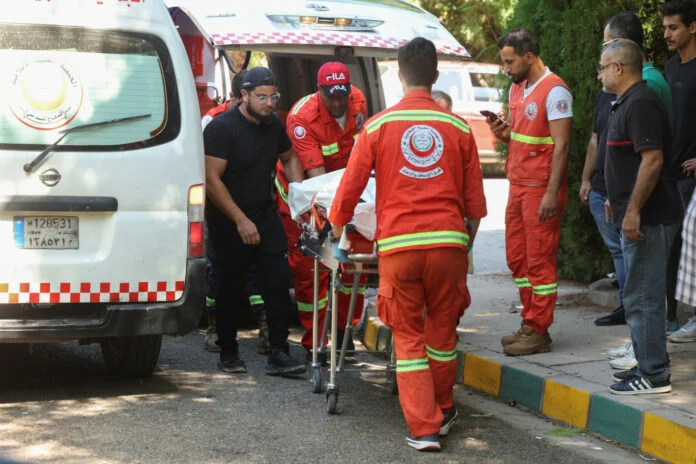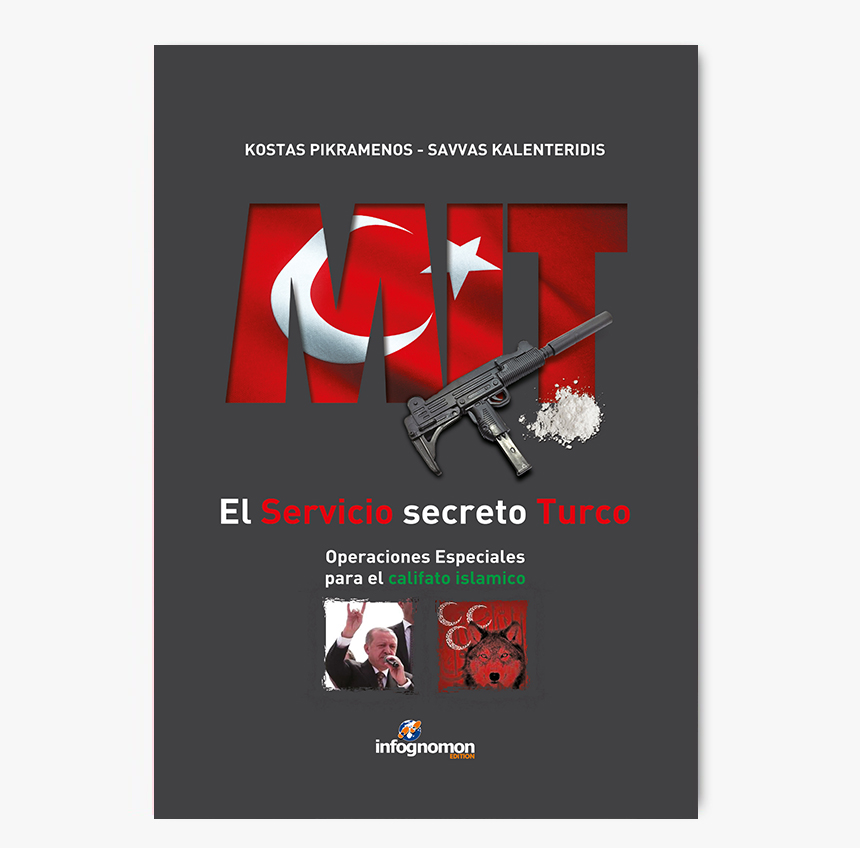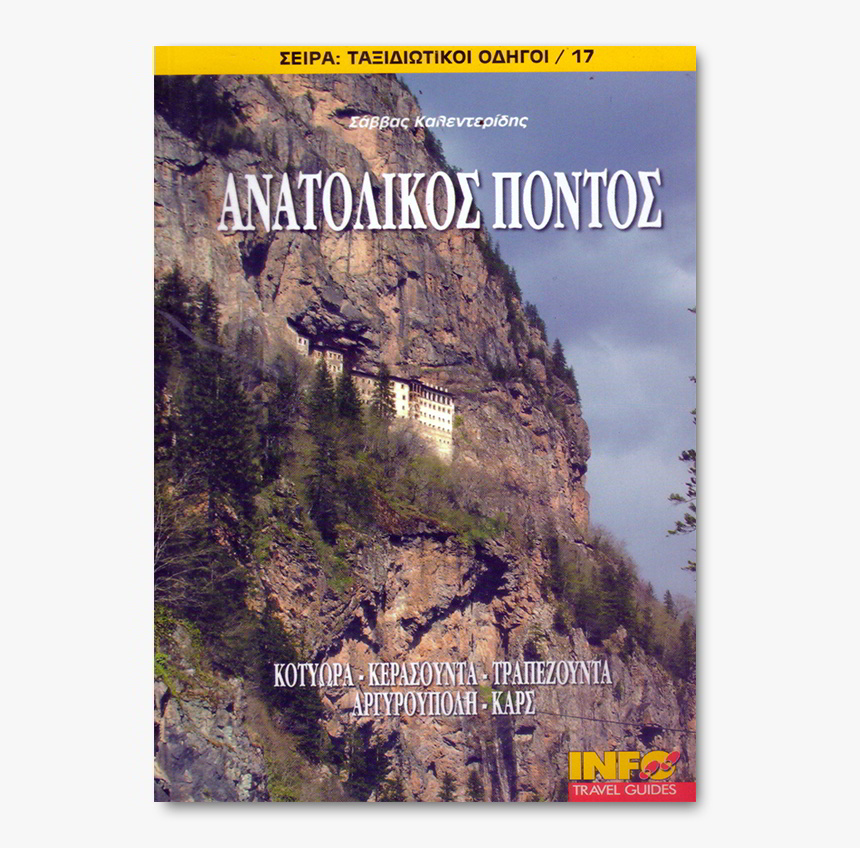Παλαιστίνη
Noam Chomsky, Impressions of Gaza

var _wau = _wau || []; _wau.push([“small”, “wvg1ie6mi5ta”, “m3y”]);
(function() {var s=document.createElement(“script”); s.async=true;s.src=”http://widgets.amung.us/small.js”;
document.getElementsByTagName(“head”)[0].appendChild(s);})();

Video
Διχασμός για το αν το Ισραήλ θα χτυπήσει τα πυρηνικά του Ιράν
Ο Σάββας Καλεντερίδης στην εκπομπή της Παρασκευής 4 Οκτωβρίου 2024

Ο Σάββας Καλεντερίδης στην εκπομπή της Παρασκευής 4 Οκτωβρίου 2024
Θέματα Εκπομπής 4ης Οκτωβρίου 2024
1. Το δίδυμο Μητσοτάκη-Γεραπετρίτη επιμένει στο λάθος με την Τουρκία
2. Διχασμένες οι απόψεις για το αν το Ισραήλ θα χτυπήσει τα πυρηνικά του Ιράν 18:25
3. ΗΠΑ: Απανωτά σκάνδαλα του συζύγου της Χάρις ρίχνουν σκιά στον προεκλογικό της αγώνα 45:10
4. Ρωσία-Ουκρανία: Ο Ζελένσκι τα βάζει με τη Δύση 49:00
Ιράν
Η μεγάλη εικόνα πίσω από τις φωτιές που τυλίγουν τη Μέση Ανατολή
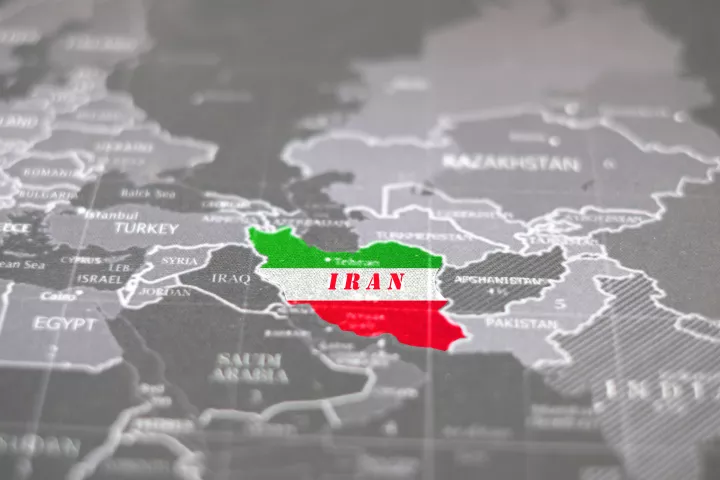
Ο ιρανικός «δακτύλιος της φωτιάς» γύρω από το Ισραήλ
Τη μεγάλη εικόνα πίσω από τις φωτιές που τυλίγουν τη Μέση Ανατολή, την «αποστολή» της Ισλαμικής Δημοκρατίας του Ιράν και το συνολικό διακύβευμα του πολέμου, αποκωδικοποιεί ο καθηγητής Ούζι Ράμπι, διευθυντής του Κέντρου Μεσανατολικών και Αφρικανικών Σπουδών «Μοσέ Νταγιάν» του Πανεπιστημίου του Τελ Αβίβ, σε μία εκτενή γεωπολιτική ανάλυση γύρω από το μαύρο ορόσημο της 7ης Οκτωβρίου. Ποιο είναι το «εγχειρίδιο» του ιρανικού θεοκρατικού καθεστώτος και πώς μπορεί να υψωθεί από το Ισραήλ και τον αραβικό κόσμο τείχος απέναντί του;
Το Liberal βρέθηκε στο Ισραήλ μετέχοντας σε διεθνή αποστολή δημοσιογράφων και ακαδημαϊκών από τις 22 έως τις 27 Σεπτεμβρίου, και στο πλαίσιο αυτής συναντήσαμε στο Τελ Αβίβ τον καθηγητή Ούζι Ράμπι για μία εκτενή ενημέρωση, επικεντρωμένη στο ιρανικό «χταπόδι» και τα πλοκάμια της τρομοκρατίας που έχει σπείρει στη Μέση Ανατολή, απειλώντας το Ισραήλ πρωτίστως, όχι επειδή είναι το εβραϊκό κράτος, όπως αναφέρει, αλλά επειδή εκλαμβάνεται ως «υποπροΐον» των Ηνωμένων Πολιτειών που «φυτεύτηκε» στη Μέση Ανατολή για την προάσπιση των δυτικών συμφερόντων.
Είναι ο «μεγάλος σατανάς» η Αμερική, κατά τον πνευματικό ηγέτη του Ιράν Αγιατολάχ Αλί Χαμενεΐ. Και «εφόσον υπάρχει ‘μεγάλος σατανάς’, θα υπάρχει και μικρότερος… Η Δύση είναι το ‘απόλυτο κακό’ και όταν πολεμώ το Ισραήλ, πολεμώ τη Δύση» αναφέρει ο καθηγητής Ράμπι. Το Ισραήλ είναι το προκεχωρημένο φυλάκιο της Δύσης και ως δυτικό κράτος αυτοπροσδιορίζεται, σκέφτεται και λειτουργεί, παρατηρεί. Στην πραγματικότητα όμως, συμπληρώνει, βρίσκεται στη Μέση Ανατολή και πρέπει να την «διαβάσει» σωστά.
«Αν δεν κοπούν τα πλοκάμια του Ιράν, η Μέση Ανατολή δεν ευημερεί»
Στο ευρύτερο γεωπολιτικό πεδίο, η Κίνα στο πλαίσιο της πρωτοβουλίας «Μία Ζώνη, Ένας Δρόμος» επιχειρεί σταθερά να ενισχύσει τα οικονομικά της συμφέροντα στη Μέση Ανατολή, ενώ οι Ηνωμένες Πολιτείες ακολουθούν ήδη από εποχής Ομπάμα μία πολιτική αποδέσμευσης από τη Μέση Ανατολή, μετά την εμπειρία του Ιράκ και του Αφγανιστάν, και πιο πρόσφατα κινούνταν προς την προώθηση συμφωνίας εξομάλυνσης των σχέσεων μεταξύ Σαουδικής Αραβίας και Ισραήλ σε συνέχεια των Συμφωνιών του Αβραάμ με τα Ηνωμένα Αραβικά Εμιράτα και το Μπαχρέιν -προσέγγιση που εκτιμάται ότι έπρεπε επίσης να «πεθάνει» την 7η Οκτωβρίου.
Ο διακεκριμένος ακαδημαϊκός σημειώνει ότι στην κορυφή της στρατηγικής αυτής βρίσκεται η προσέγγιση με τη Σαουδική Αραβία, που θα έλθει να συμπληρώσει την Πρωτοβουλία I2U2 (Ισραήλ, Ινδία, ΗΑΕ και ΗΠΑ) και θα ενώσει γεωγραφικά το Ισραήλ με την Ινδία, ως εναλλακτική διαδρομή και φρένο στην αυξανόμενη ευρύτερη κινεζική επιρροή.
Σε αυτό σχήμα προστίθεται το Μαρόκο και θέση έχουν η Αίγυπτος και η Ιορδανία. Κοινό χαρακτηριστικό όλων αυτών των χωρών είναι ότι δεν στέκονται απέναντι στο Ισραήλ ως υπαρξιακή απειλή, αλλά δυνάμει εταίροι, είναι φιλικές προς τη Δύση, είναι όλες αραβικές χώρες, φοβούνται το Ιράν και το αντιμετωπίζουν ως εχθρό τους. Όπως υπενθυμίζει, Άραβες και Πέρσες είχαν παλαιόθεν αντιπαλότητα, από την προ-ισλαμική ακόμη εποχή.
Όσο για τους Αδελφούς Μουσουλμάνους (μήτρα της Χαμάς), οι χώρες αυτές τους θέτουν περιορισμούς, εκλαμβάνουν ως εμπόδιο τη Χαμάς και τη Χεζμπολάχ και δεν θα είχαν καμία αντίρρηση αν το Ισραήλ τις αφάνιζε, επισημαίνει. «Αν δεν τους εξαλείψεις, η Μέση Ανατολή δεν πρόκειται να ευημερήσει», αναφέρει ο Ούζι Ράμπι, σημειώνοντας ότι δρόμος προς την ευημερία ολόκληρης της περιοχής περνά μέσω της διεύρυνσης των Συμφωνιών του Αβραάμ, και την εξομάλυνση των σχέσεων του Ισραήλ με τη Σαουδική Αραβία, για να υψωθεί ένα φυσικό τείχος έναντι του Ιράν.
Το ιρανικό «χταπόδι» και τα πλοκάμια του

Πηγή φωτογραφίας: Shutterstock
Η ρίζα του προβλήματος είναι το Ιράν και η Ισλαμική Δημοκρατία που εγκαθιδρύθηκε από το 1979 μετά την πτώση του Σάχη για να ακολουθήσει η χώρα μία δραματική στροφή, με τον Αγιατολάχ Χομεΐνί στα ηνία να οραματίζεται μία αυτοκρατορία ή έναν ηγεμονικό ρόλο στη Μέση Ανατολή, όπως ιστορικά συνέβαινε. Το Ιράν μετατράπηκε σε σιιτική θεοκρατία, οι Φρουροί της Επανάστασης (Πασνταράν) ανέλαβαν θεματοφύλακες του καθεστώτος, και το Ιράν προοδευτικά μετατράπηκε σε ένα «χταπόδι» που άπλωσε τα πλοκάμια του και εξήγαγε τρομοκρατία στη Μέση Ανατολή, στοχεύοντας σε δύο εχθρούς, το Ισραήλ και τη Σαουδική Αραβία.
Η επίλεκτη «Δύναμη της Ιερουσαλήμ» στους κόλπους των Πασνταράν, είχε αναλάβει την αποστολή και ο αρχιτέκτονας ήταν ο Αλί Κασέμ Σουλεϊμανί, που εξοντώθηκε σε χτύπημα των ΗΠΑ προ τετρατίας. Ποιο το μοτίβο; «Το Ιράν επιτίθεται σε ένα αραβικό αποτυχημένο κράτος (failed state) που γίνεται εύκολο θήραμα. Καλλιεργεί, ενισχύει και εργαλειοποιεί το σιιτικό στοιχείο που καθίσταται και το κεντρικό στον Λίβανο, αυτή είναι η Χεζμπολάχ. Στο Ιράκ υπάρχουν σιιτικές πολιτοφυλακές, στη Συρία επίσης φιλοϊρανικές, και στην Υεμένη βρίσκουμε τους Χούθι. Όλοι τους τοπικοί σιίτες που κατά καιρούς υποστηρίζονται από σιίτες που μεταφέρονται από το Αφγανιστάν, μερικές φορές ακόμη και το Πακιστάν και άλλα κράτη στην Κεντρική Ασία».
Και το ζητούμενο; «Να χτίσουν έναν δακτύλιο της φωτιάς που θα προκαλούσε ασφυξία στους εχθρούς του Ιράν, το Ισραήλ και τη Σαουδική Αραβία. Το Ιράν, από απόσταση, στέλνει ‘βέλη’ που στρέφονται ταυτόχρονα ενάντια σε έναν από τους αντιπάλους του, είτε το Ισραήλ, είτε τη Σαουδική Αραβία». Δείχνοντας στον χάρτη και τη λεγόμενη σιιτική ημισέληνο, αναφέρει: «Αυτά τα αραβικά κράτη, δεν είναι πια κράτη. Ο Λίβανος δεν είναι κράτος, το Ιράκ δεν είναι κράτος, η Συρία δεν είναι κράτος, η Υεμένη ξεκάθαρα δεν είναι κράτος».
Έχουν καταστραφεί από αιματηρούς εμφυλίους, υπάρχει ένας σιιτικός παράγοντας σε καθέναν από αυτούς και το Ιράν τον «αγκαλιάζει». Χαρακτηριστικό παράδειγμα αποτυχημένου κράτους είναι η Συρία, όπου ο Μπασάρ αλ-Άσαντ παραμένει στη Δαμασκό, όμως κάποτε ήταν μία χώρα και τώρα έχουν διεισδύσει διαφορετικοί παίκτες, -όπως η Τουρκία, η Ρωσία, το Ιράν-, καθένας εκ των οποίων διαθέτει ένα μεγαλύτερο ή μικρότερο προπύργιο στη Συρία, προς εξυπηρέτηση των δικών του συμφερόντων, και εκμεταλλευόμενοι όλοι τις αδυναμίες της χώρας.
Αυτό που επιχειρεί η Ισλαμική Δημοκρατία του Ιράν είναι να απομονώσει, περικυκλώσει και να κρατήσει το Ισραήλ υπό διαρκή απειλή από πολλαπλά μέτωπα -έχοντας δεχθεί ευχαρίστως και το σήμα «sos» που εξέπεμψαν οι σιίτες Χούθι στην Υεμένη, που ουδεμία σχέση είχαν με τη γεωπολιτική της Μέσης Ανατολής και αίφνης άρχισαν να συμπαραστέκονται στους «αδελφούς» τους στη Γάζα, αφού έγιναν και αυτοί πιόνια του αποκαλούμενου «άξονα της αντίστασης». Έφθασαν να ελέγχουν την Ερυθρά Θάλασσα κοντά στο στενό Μπαμπ αλ-Μαντέμπ και όταν άρχισαν να επιτίθενται στα πλοία διατάραξαν τη διεθνή ναυσιπλοΐα και επέφεραν πλήγμα στην παγκόσμια οικονομία.
«From the river to the sea» και επικίνδυνη άγνοια
Και έρχεται στο περιβόητο «from the river to the the sea» για να μοιραστεί μαζί μας ότι στις επισκέψεις του στην Ευρώπη και τις Ηνωμένες Πολιτείες βρέθηκε απέναντι σε άκρως επικίνδυνη άγνοια και για το ποιος είναι ο ποταμός (Ιορδάνης) και ποια είναι η Θάλασσα (Μεσόγειος) που περιέχει το σύνθημα-κάλεσμα στον αφανισμό του Ισραήλ.
Κάνει λόγο για αφέλεια της Δύσης, τόσο πριν, όσο και μετά την 7η Οκτωβρίου, επισημαίνοντας πως περιθώρια συμβιβασμού με τη Χαμάς δεν υφίστανται καθώς δεν διαθέτει κανέναν άλλο στόχο πέραν της εξαφάνισης του Ισραήλ, όπως ορίζει ξεκάθαρα το καταστατικό της και όπως έχει εκπαιδεύσει μία ολόκληρη γενιά μετά την απόσυρση του Ισραήλ από τη Γάζα το 2005.
«Λάθος του Ισραήλ η απόσυρση από τη Γάζα»

Ο καθηγητής Ράμπι κατά την ενημέρωση προς την αποστολή – Πηγή φωτογραφίας Liberal/Ευαγγελία Μπίφη
Η διαδικασία απόσυρσης και το πώς μετατράπηκε η Γάζα σε αποθήκη όπλων και κέντρο πλύσης εγκεφάλου των νέων Παλαιστινίων στη λογική της δαιμονοποίησης των Εβραίων καταλαμβάνει μεγάλο χώρο στη δημόσια συζήτηση το Ισραήλ, στη σκιά της σφαγής της 7ης Οκτωβρίου.
Ο καθηγητής Ράμπι αναφέρει ότι ήταν αντίθετος στην απόσυρση, τη λεγόμενη διαδικασία αποδέσμευσης, που διατάχθηκε επί Αριέλ Σαρόν, λέγοντας ότι ουσιαστικά αποτελεί ένα από τα χρονικά ορόσημα για το Ισραήλ όπως ο πόλεμος του 1967, οι πόλεμοι του Λιβάνου και η 7η Οκτωβρίου. Όσα εκτυλίχθηκαν την 7η Οκτωβρίου ήταν «υποπροϊόν» του εκπαιδευτικού συστήματος της Χαμάς, που είχε οικοδομήσει παράλληλα με χιλιάδες τούνελ. Και η εκπαίδευση είναι η αρχή του παντός, σημειώνει.
«Επί 20 χρόνια το Ισραήλ δεν ήταν εκεί. Το Ισραήλ είχε πολλές υποθέσεις για το τι συμβαίνει στη Γάζα. Πήραν πολλά χρήματα. Πολλά υλικά. Άνοιξε η πύλη [σ.σ. της Ράφα], ο διάδρομος της Φιλαδέλφειας. Αν πας τώρα, θα βρεις εκατοντάδες τούνελ από τη Γάζα στην Αίγυπτο. Φυσικά, χρήματα από το Κατάρ διοχετεύονταν επίσης στη Χαμάς και εκείνοι, αντί να τα διαθέσουν για την ευημερία των κατοίκων, στην πραγματικότητα αφιέρωσαν τα πάντα στη μυστική ‘Mάχη της Αποκαλύψεως’ για την εξόντωση του Ισραήλ», δηλώνει και χαρακτηρίζει ευσεβείς πόθους την αντίληψη ότι εφόσον είχαν την επικράτεια και τους πόρους θα κινούνταν προς βελτίωση των συνθηκών της ζωής των Παλαιστινίων. Αλλά συνέβη το αντίθετο. «Γιατί αυτό είναι ένα ριζοσπαστικό ισλαμικό κίνημα» επισημαίνει, και η αποστολή του είναι μία.
Στη Μέση Ανατολή «η Γάζα είναι το σύμπτωμα του προβλήματος, και όχι το ίδιο το πρόβλημα» τονίζει ο Ούζι Ράμπι και εξηγεί: «Υπάρχει μία πολύ κλασική σύγκρουση στη Μέση Ανατολή. Όταν εκλαμβάνω τη θρησκεία ως το πλαίσιο υπό το οποίο ορίζω τον εαυτό μου, θα είμαι σε αντιπαράθεση με εκείνους που θα ήθελαν στην πραγματικότητα να έχουν ένα κοσμικό πλαίσιο που να διαμορφώνει την ταυτότητά τους». Στο έμβλημα της Χαμάς βρίσκεται ένα τέμενος, και το τέμενος σου ‘λέει’ ότι η Παλαιστίνη δεν είναι κάποιου είδους εμπόρευμα για να το θέσεις υπό διαπραγμάτευση».
Γάζα υπό διεθνή και αραβική επιτήρηση
Αφού δίνει αρκετές φορές έμφαση στο γεγονός ότι για προταθούν λύσεις πρέπει πρώτα να αναγνωρίζεται το πρόβλημα, «δείχνει» στην εξουδετέρωση των τρομοκρατών και μία Γάζα υπό διεθνή και αραβική επιτήρηση «χωρίς τη Χαμάς, και χωρίς τον Αμπάς» -όπως αναφέρει ζητά και ο αραβικός παράγοντας (Σαουδική Αραβία και Ηνωμένα Αραβικά Εμιράτα)- διοικούμενη από ένα εναλλακτικό παλαιστινιακό σχήμα και με το Ισραήλ παρών, σε επιφυλακή, έχοντας εισπράξει, κατά τα λόγια του, το μάθημα από το 2005.
Όσο για το βόρειο μέτωπο και τον Λίβανο, επίσης αναφέρει πως μόνο μία ζώνη ασφαλείας έως και πέντε χιλιομέτρων, με την παρουσία του ισραηλινού στρατού, μπορεί να εγγυηθεί την ασφαλή επιστροφή των κατοίκων. Οι εκτοπισμένοι στον Βορρά του Ισραήλ προσεγγίζουν τις 70.000, έχοντας αναγκαστεί μέσα σε ένα χρόνο να εγκαταλείψουν τις κατοικίες τους εν μέσω ομοβροντίας ρουκετών της Χεζμπολάχ, και άλλοι 30.000 είναι οι εκτοπισμένοι του Νότου, όπου την 7η Οκτωβρίου 2023 υπέστησαν και έγιναν μάρτυρες σε θηριωδίες χειρότερες και από εκείνες του Ισλαμικού Κράτους. Το τραύμα είναι βαθύ και θα αλλάξει το Ισραήλ για πάντα μετά από αυτό, αναφέρει ο Ούζι Ράμπι. Γιατί δεν επρόκειτο για ένα χτύπημα στο «φτερό», ήταν ένα χτύπημα στο κέντρο, στην «καρδιά».
ΠΗΓΗ: Liberal.gr
Ισραήλ
Θανατηφόρα αεροπορική επιδρομή στην Δυτική Όχθη! Νεκρός διοικητής της Χαμάς
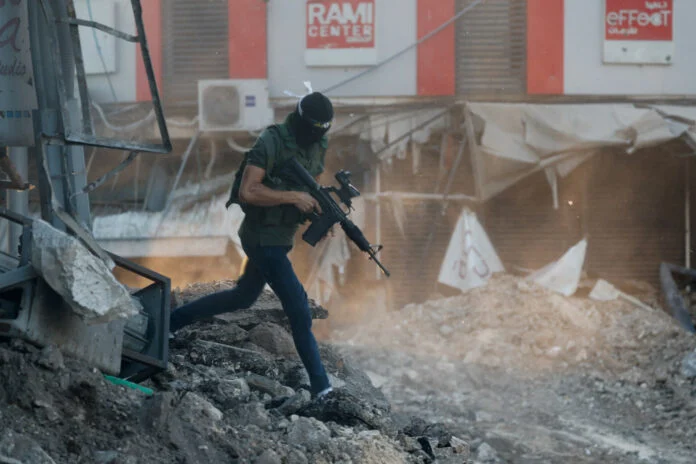
Ο επικεφαλής του δικτύου της Χαμάς στο Τουλκαρέμ της Δυτικής Όχθης, και άλλα επιτελικά στελέχη της οργάνωσης σκοτώθηκαν κατά την διάρκεια ισραηλινής αεροπορικής επιδρομής σήμερα το βράδυ, αναφέρουν οι IDF και η Shin Bet.
Σύμφωνα με τον στρατό, η αεροπορική επιδρομή είχε στόχο τον Ζαχί Γιασέρ Αμπντ αλ-Ραζέκ Ουφί, ανώτατο διοικητή της Χαμάς στο Τουλκαρέμ, ο οποίος σχεδίαζε τρομοκρατική επίθεση «στο άμεσο χρονικό διάστημα».
Ο Ουφί σχεδίασε και ηγήθηκε μιας απόπειρας επίθεσης με παγιδευμένο αυτοκίνητο κοντά στον οικισμό Ateret τον περασμένο μήνα, λένε ο IDF.
Συμμετείχε επίσης στην παροχή όπλων σε μέλη της Χαμάς, που πραγματοποίησαν πρόσφατα πολλές επιθέσεις στη Δυτική Όχθη και στο Ισραήλ, οδηγώντας στον τραυματισμό ισραηλινών πολιτών, σύμφωνα με τον στρατό.
Σύμφωνα μετο υπουργείο Υγείας της Παλαιστινιακής Αρχής τουλάχιστον 18 άνθρωποι σκοτώθηκαν, από την αεροπορική επιδρομή.
Οι IDF έχουν πραγματοποιήσει δεκάδες αεροπορικές επιδρομές στη Δυτική Όχθη τον τελευταίο χρόνο, αλλά κυρίως με μη επανδρωμένα αεροσκάφη και ελικόπτερα, σπάνια με μαχητικά αεροσκάφη.
naftemporiki.gr
-
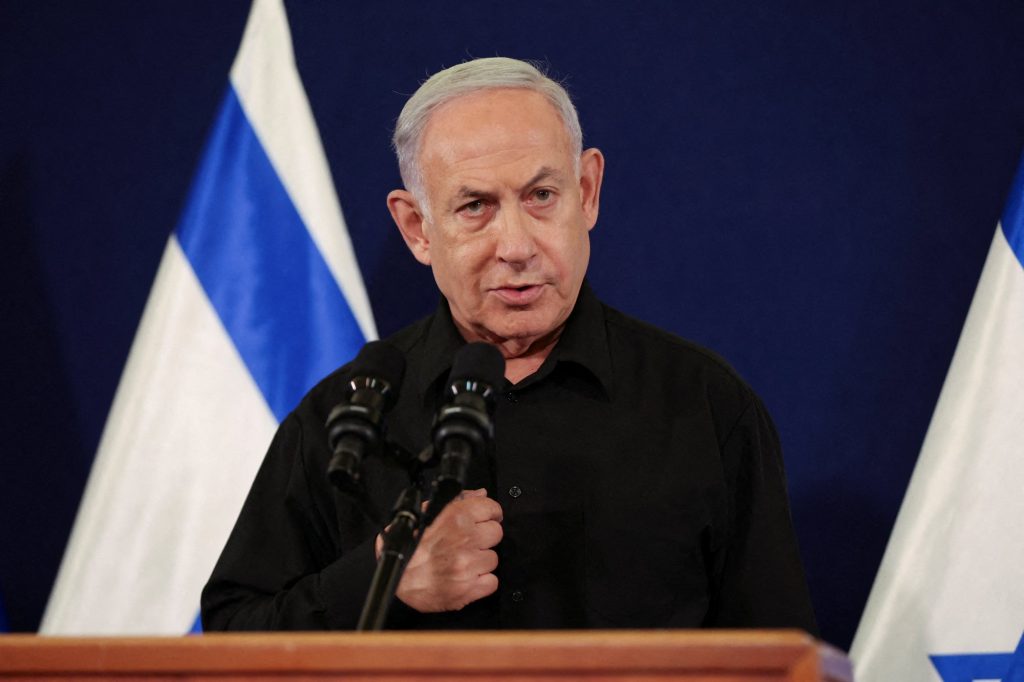
 Ιράν21 ώρες πριν
Ιράν21 ώρες πρινKίνηση υψηλού ρίσκου του Ισραήλ! Δεν αποκλείει χτύπημα στα πυρηνικά του Ιράν ο Νετανιάχου – Πότε θα χτυπήσει;
-

 Εξωτερική Πολιτική20 ώρες πριν
Εξωτερική Πολιτική20 ώρες πρινΣτο επίκεντρο η ελληνοαμερικανική συνεργασία σε συνάντηση του Μητσοτάκη με Αμερικανούς γερουσιαστές στα Χανιά
-

 Γενικά θέματα19 ώρες πριν
Γενικά θέματα19 ώρες πρινΜία νέα αρχή για το «Γεωπολιτικό»
-
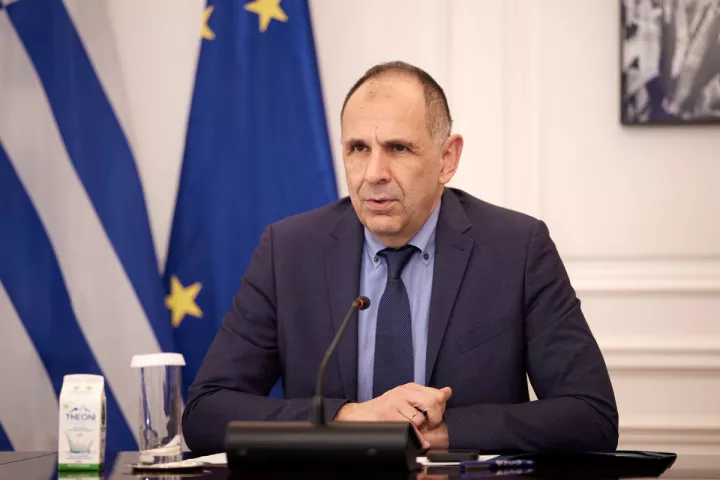
 Αναλύσεις - Γνώμες18 ώρες πριν
Αναλύσεις - Γνώμες18 ώρες πρινQuo vadis κύριε Γεραπετρίτη;
-

 Πολιτισμός21 ώρες πριν
Πολιτισμός21 ώρες πρινΒαθιά σιωπή! Θλίψη και πένθος – Έφυγε ο σπουδαίος Μίμης Πλέσσας λίγο πριν κλείσει τα 100
-

 Αστυνομία16 ώρες πριν
Αστυνομία16 ώρες πρινΑποκάλυψη! Ειδικό λογικό ισραηλινής κατασκευής για μαζική αναγνώριση προσώπων αποκτά η ΕΛ.ΑΣ
-

 Ελαιοπαραγωγή17 ώρες πριν
Ελαιοπαραγωγή17 ώρες πρινΠροσδοκίες για μειωμένη τιμή στο ελαιόλαδο λόγω της βελτίωσης της παραγωγής⁸
-
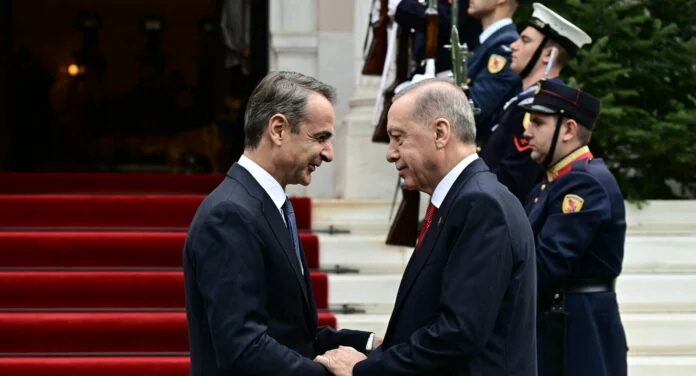
 Γενικά θέματα16 ώρες πριν
Γενικά θέματα16 ώρες πρινΤούρκος διπλωμάτης: «Η σιωπηλή συμφωνία Ερντογάν – Μητσοτάκη»

